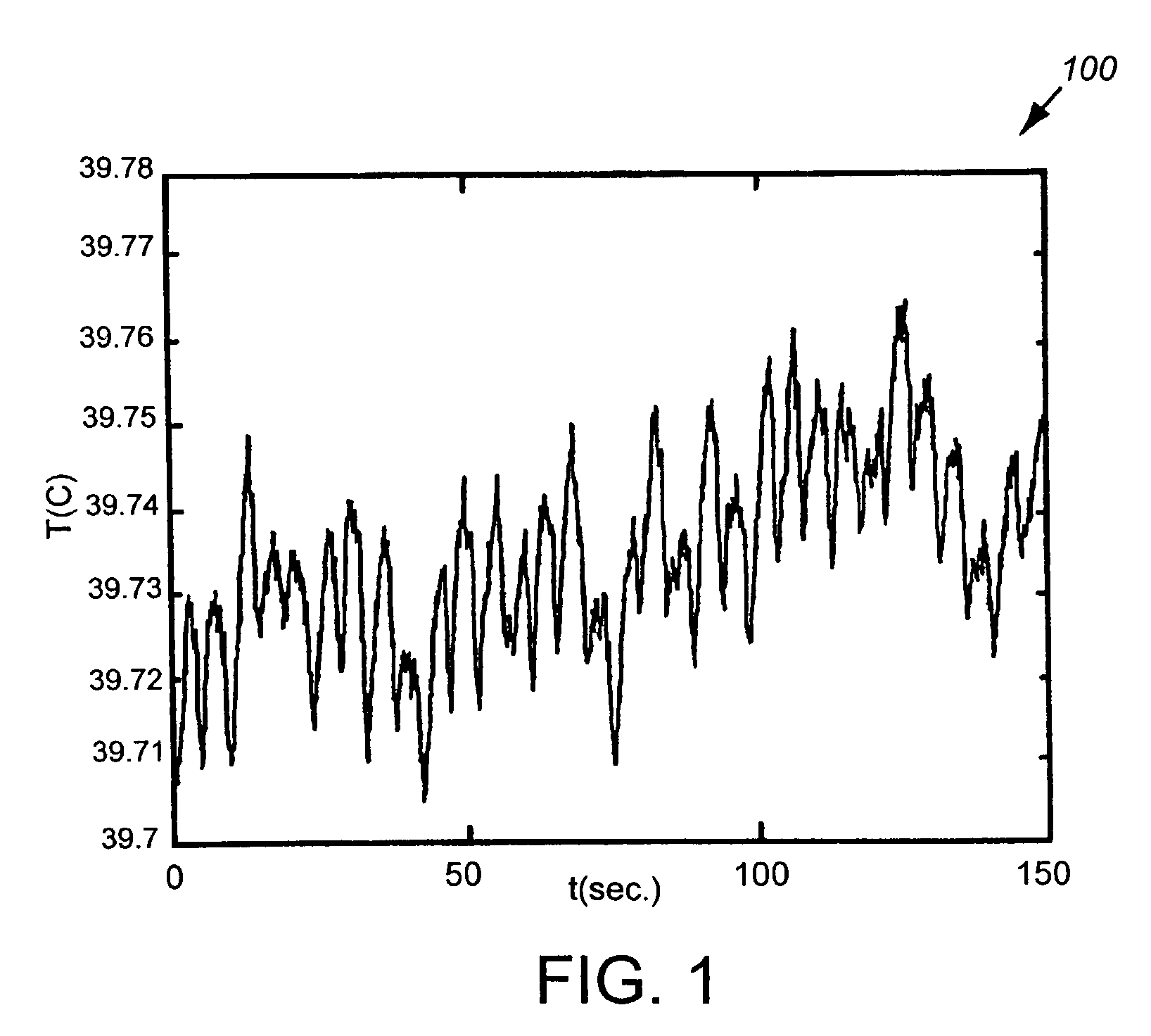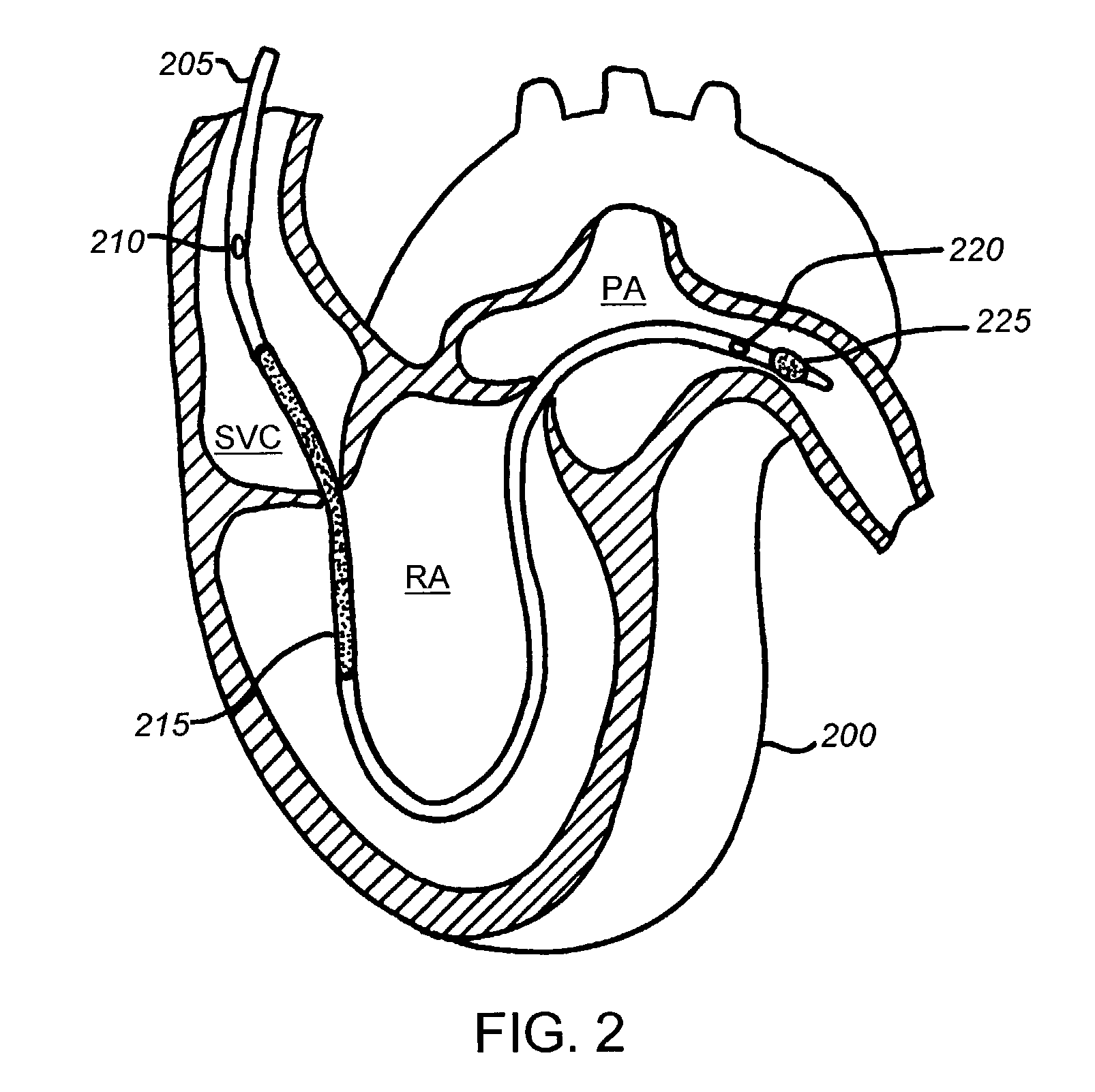System and method for noise reduction in thermodilution for cardiac measurement
- Summary
- Abstract
- Description
- Claims
- Application Information
AI Technical Summary
Benefits of technology
Problems solved by technology
Method used
Image
Examples
Embodiment Construction
[0024]As shown in FIG. 2, a catheter 205 includes a pressure port 210 that allows the catheter system to monitor the pressure in the superior vena cava (SVC) or the inferior vena cava (IVC) (not shown). Typical respiration produces pressure fluctuations on the order of 3–7 mmHg in the IVC and the SVC. In the illustrative embodiment, respiration cycles are detected from these fluctuations. The catheter 205 also includes an electrical heat source 215 that generates sequences of heat pulses as described herein. A thermistor 220 senses the temperature of the blood in the pulmonary artery. Additionally, the catheter 205 includes a balloon 225 that allows the catheter to be flow-directed through the circulatory system of a patient.
[0025]FIG. 3 is a diagram of the steps of a procedure 300 in accordance with an illustrative embodiment of the present invention. In step 305, the inferior vena cava pressure is sampled and digitized. In the illustrative embodiment, this sampling of the pressure...
PUM
 Login to View More
Login to View More Abstract
Description
Claims
Application Information
 Login to View More
Login to View More - R&D
- Intellectual Property
- Life Sciences
- Materials
- Tech Scout
- Unparalleled Data Quality
- Higher Quality Content
- 60% Fewer Hallucinations
Browse by: Latest US Patents, China's latest patents, Technical Efficacy Thesaurus, Application Domain, Technology Topic, Popular Technical Reports.
© 2025 PatSnap. All rights reserved.Legal|Privacy policy|Modern Slavery Act Transparency Statement|Sitemap|About US| Contact US: help@patsnap.com



